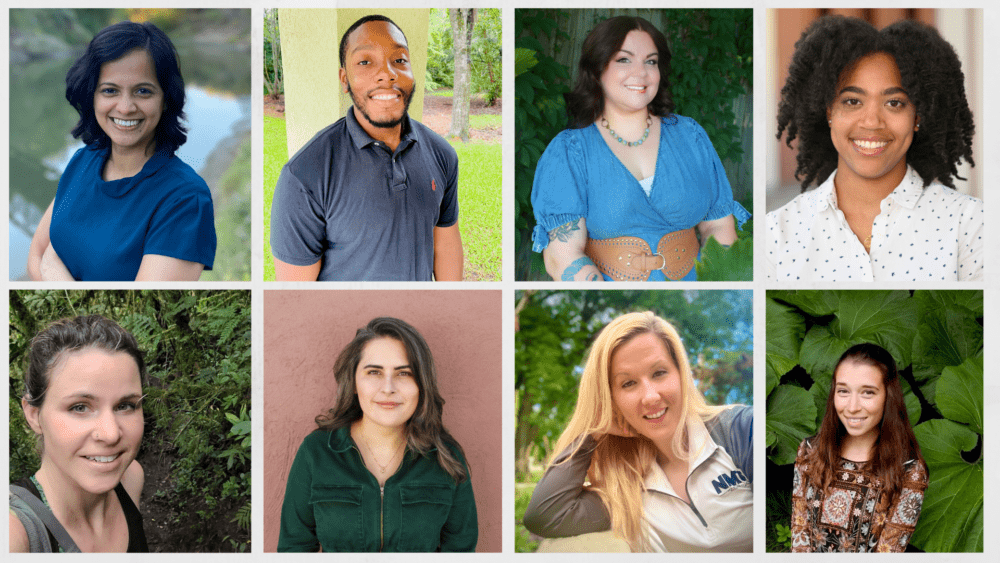We have much more to do and your continued support is needed now more than ever.
An EcoLeader’s Perspective
2nd Biennial Confluence of Young Conservation Leaders – An NWF EcoLeader’s Perspective
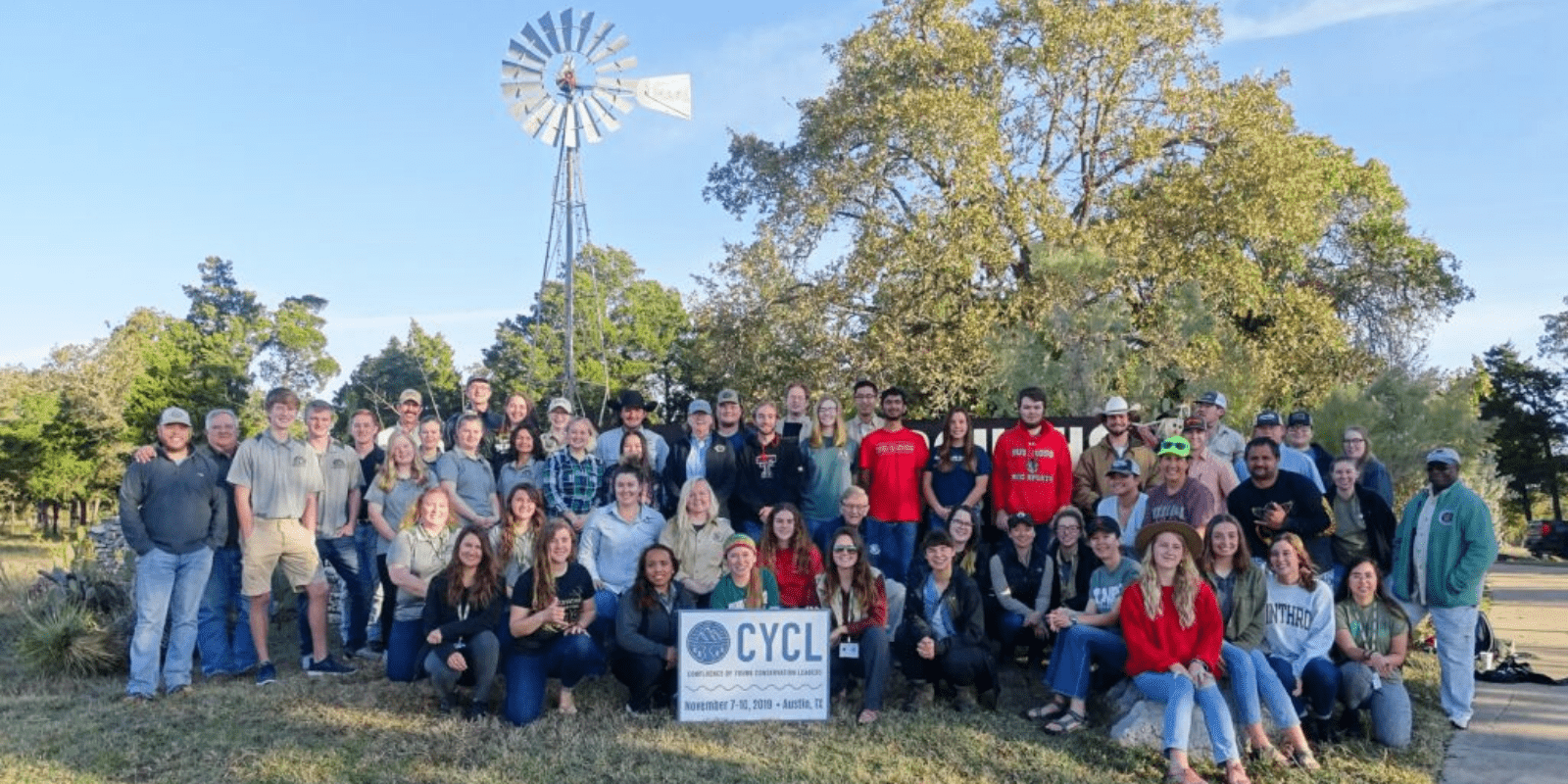
Last month, National Wildlife Federation’s EcoLeaders program, an initiative dedicated to leadership and career development for young people passionate about futures in Conservation and Sustainability career sectors, sent NWF EcoLeader and Winthrop University student, Abby Simon, to the 2nd Biennial Confluence of Young Conservation Leaders (CYCL) in Austin, TX. National Wildlife Federation along with our affiliates, the Conservation Federation of Missouri and Wisconsin Wildlife Federation helped to sponsor the gathering. This year’s event, hosted by Texas Brigades brought together over 70 participants consisting of staff and student leader representatives from 9 states and 15 organizations including NWF and the following NWF affiliates: Conservation Federation of Missouri, Florida Wildlife Federation, Minnesota Conservation Federation, and Wisconsin Wildlife Federation.
CYCL is a collaboration between natural resource agencies and youth conservation organizations in multiple states aiming to share ideas and support the growth of youth conservation organizations across the nation to help develop the next generation of young conservation leaders. The first in-person CYCL gathering was hosted by NWF affiliate, the Conservation Federation of Missouri in Kansas City in 2017. Below is a reflection from CYCL participant and NWF EcoLeader, Abby Simon, on her experience.
I stepped out of the Austin airport expecting warm, sunny Texas skies; I was greeted by a chilly drizzle and heavy clouds instead. Fortunately, my disappointment with the weather was quickly offset by the smiling faces I met during our transport from the airport to McKinney Roughs Nature Park. Although I was the only South Carolinian in attendance at CYCL I was able to make connections with like-minded individuals from Wisconsin, Hawaii, Missouri, and of course Texas (where yes, everything does seem to be bigger – especially the portion sizes). I was pleased with McKinney Roughs from the time I arrived until the moment I left. Families of deer were visible daily all along the tree line and the familiar howl of the coyote filled the landscape each night after the sun went down.
This year was the second CYCL event and it focused primarily on water. Water quality, water scarcity, you name it. Our first full day of CYCL included an afternoon spent at Selah Bamberger Ranch where we were treated with a talk from Mr. Bamberger himself (he is quite a personable guy!). Mr. Bamberger worked in the fast-food industry until he sold off his restaurant chain and used the profit to begin his next project, the Bamberger Ranch. Mr. Bamberger’s vision was to purchase the worst possible piece of land he could find and transform it into a productive, biodiverse oasis for wildlife in the hill country of Texas. After fifty years of hard work restoring and managing the property, it seems that Mr. Bamberger has fulfilled his dream for Selah.
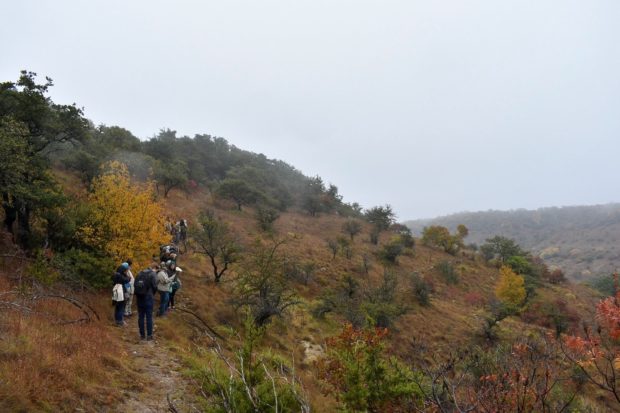
I chose to major in environmental studies rather than environmental science. So, although I have a basic understanding of how exactly water “works,” I am no expert. Fortunately, this meant there was much to be learned at CYCL. The first activity we completed at Bamberger Ranch was a demonstration of how runoff and groundwater work together in the presence and in the absence of grasses. It turns out that planting more trees does more harm than good in a grassland (go figure, right?). Without native grasses, water cannot be captured by the ground which leads to erosion and barren aquifers. After decades of adaptive management, the Bamberger Ranch (which was once without water) now boasts a beautiful lake and natural springs. Later in the afternoon, we received a lesson on macroinvertebrate stream scoring. I liked this activity a lot because I got to pick up frogs (which sadly did not count towards the macroinvertebrate count…). However, we were able to determine that Bamberger’s water appears to be quite healthy. We concluded our stay at Selah with a heartfelt talk from Mr. Bamberger who advised us to spend more time with our grandparents.
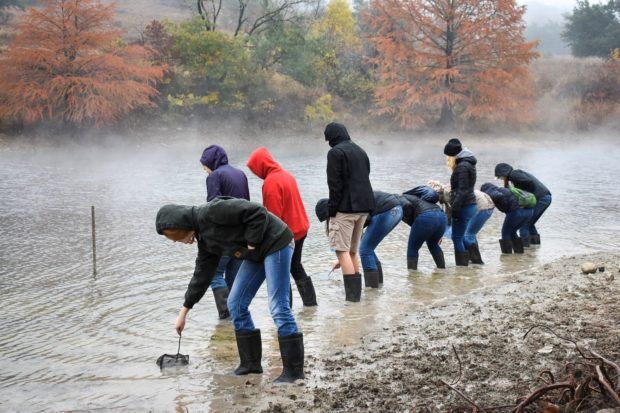
For the second half of day one, we enjoyed a picnic lunch at Blanco State Park and a bit of free time for trail walking and hiking. In the evening after a hefty and delicious dinner, we gathered together for a presentation by Texas Parks and Wildlife’s Cindy Loeffler. Mrs. Loeffler gave us the “411” of Texas’ water situation including the impacts of the devastating 2011 drought and the legal issues associated with water rights for states using water from the Colorado River. The evening concluded with networking over ice cream (the best kind of networking if you ask me) and an “owl prowl” night hike. A day well spent, I’d say!
The real fun began on day two of CYCL. In the morning we enjoyed a calm and sunny kayaking session with brief stops along the river. I learned about the complex components of a riparian zone and how those elements need to be managed in order to keep rivers flowing and their surrounding lands sheltered from erosion. I also learned several tips for determining the health of a riparian area including the types of plants that are growing along the water’s edge. In the afternoon we moved on to a ropes course and participated in several team-building activities.
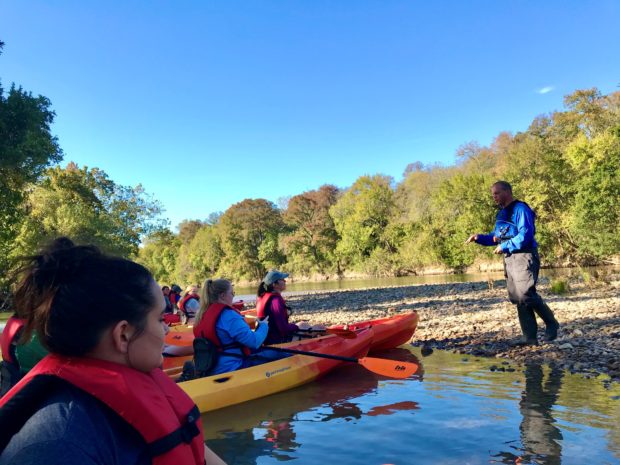
Before dinner, the group gathered to discuss several important topics including national natural resource issues, opportunities in the field of natural resources, and how to develop yourself as a young conservation leader. These sessions engaged me with problems that I was previously unaware of as they are a bit outside of what I am studying. I was able to learn more about forestry and wildlife management while in attendance at CYCL than I have learned after almost completing my undergraduate degree. My greatest takeaway from these sessions came from a young woman who is currently working in Hawaii. She spoke specifically to the ladies in the room and encouraged us to apply to anything and everything we are interested in. She was saddened by the thought that many girls do not apply to open positions within the natural resource field simply because they may feel underqualified, however, according to her, employers may be much more flexible than what one might think. Finally, day two ended with another savory home-cooked meal and a bonfire shared with smores and new friends.
Overall, CYCL gave me the opportunity to form connections across the nation with other students and professionals. I developed a real friendship with an undergraduate freshman from Texas and offered her my help as a mentor throughout her next three years of college. Further, I was able to learn more about the research that others in my area of interest have conducted and broaden my knowledge of graduate programs that would best suit my professional goals. I am grateful to the National Wildlife Federation and to Courtney who extended the CYCL invitation to me. CYCL was an experience that I will not forget!


















